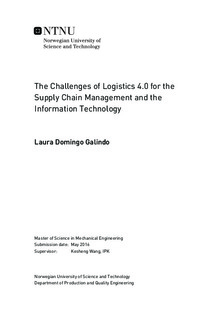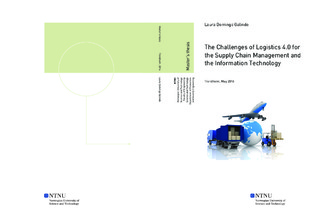| dc.description.abstract | Internet has changed our life. It has brought a new way of communication, transferring information and making businesses. The term already known as Internet of things , provides the idea of the digital connection between objects via internet, creating a network where data is shared and exchanged. This concept has triggered an industrial evolution already called Industry 4.0 , where new technologies are developed bringing more automation and transparency to manufacturing.
Industry 4.0 is a term that presents the picture of the future smart factory where production contains modular and efficient manufacturing systems and characterized scenarios in which products can control their own production processes. Therefore, logistics processes play an important role to achieve faster and optimization of goods handling.
This Master Thesis is focused in Logistics 4.0, where Cyber-Physical System and technologies, which free humans to carry out activities that are repetitive and automatic, play an essential role. Parts of CPS as Radio Frequency Identification Systems are further developed in a Case Study, where is attempted to give a clear understanding of how Logistics 4.0 solutions can add value to the actual Logistics.
The outcome of this Master Thesis can be applied in manufacturing industry where Supply Chain Management is an important issue to optimize the production. | |

